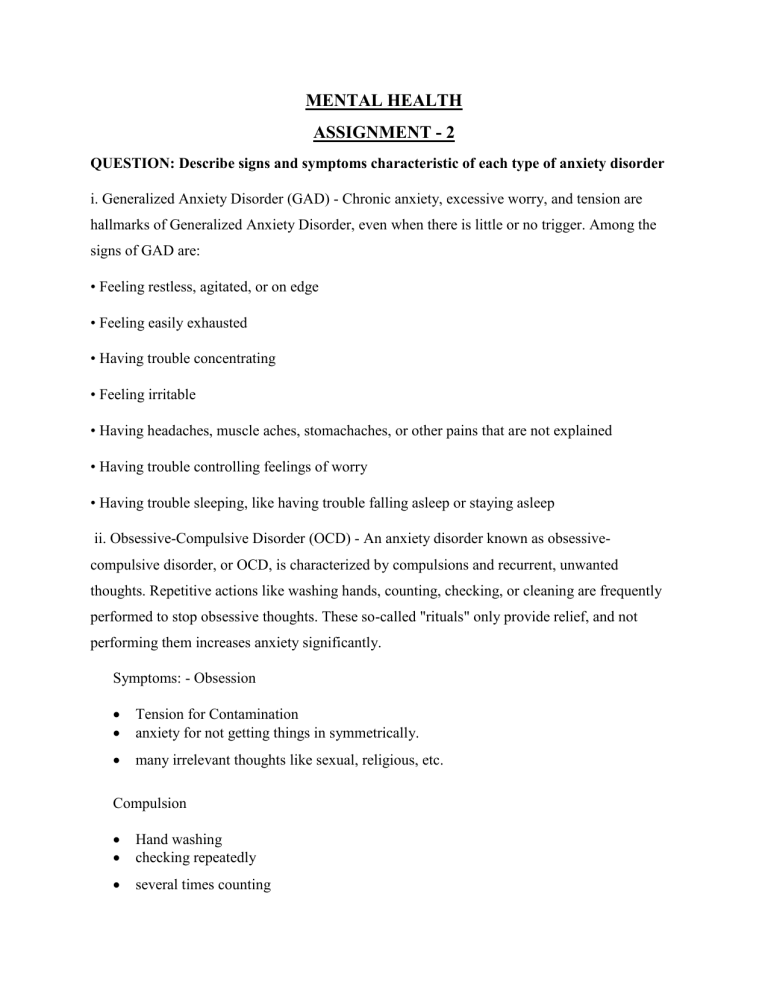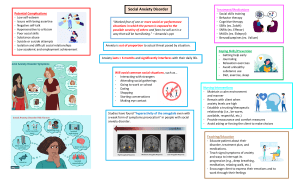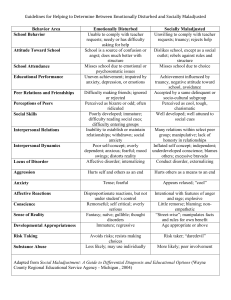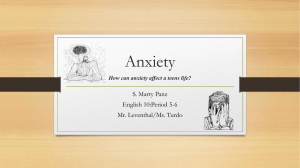
MENTAL HEALTH ASSIGNMENT - 2 QUESTION: Describe signs and symptoms characteristic of each type of anxiety disorder i. Generalized Anxiety Disorder (GAD) - Chronic anxiety, excessive worry, and tension are hallmarks of Generalized Anxiety Disorder, even when there is little or no trigger. Among the signs of GAD are: • Feeling restless, agitated, or on edge • Feeling easily exhausted • Having trouble concentrating • Feeling irritable • Having headaches, muscle aches, stomachaches, or other pains that are not explained • Having trouble controlling feelings of worry • Having trouble sleeping, like having trouble falling asleep or staying asleep ii. Obsessive-Compulsive Disorder (OCD) - An anxiety disorder known as obsessivecompulsive disorder, or OCD, is characterized by compulsions and recurrent, unwanted thoughts. Repetitive actions like washing hands, counting, checking, or cleaning are frequently performed to stop obsessive thoughts. These so-called "rituals" only provide relief, and not performing them increases anxiety significantly. Symptoms: - Obsession Tension for Contamination anxiety for not getting things in symmetrically. many irrelevant thoughts like sexual, religious, etc. Compulsion Hand washing checking repeatedly several times counting Behavior Fear of germs or contamination Unwanted forbidden thoughts involving sex, religion, or harm Aggressive thoughts toward oneself or others Having things in a perfect order iii. Panic Disorder - An anxiety disorder known as a panic disorder is characterized by sudden and recurrent bouts of intense fear that are accompanied by physical symptoms like heart palpitations, shortness of breath, chest pain, dizziness, or discomfort in the abdominal area. Heart palpitations, shortness of breath, imminent doom feelings, and chest pain are all possible symptoms. The signs include a heartbeat that is pounding or racing, sweating, trembling, or tingling, chest pain, fear of death, and feeling out of control are all symptoms. iv. Post-Traumatic Stress Disorder - Anxiety disorder, known as Post-Traumatic Stress Disorder, or PTSD, can occur following exposure to a horrenduous event which may have resulted to physical harm. Violent personal assaults, natural or artificial disasters, accidents, and military combat are examples of traumas that can cause post-traumatic stress disorder (PTSD). The signs include: • Having flashbacks • Being easily startled or scared • Always being alert to potential danger. • Negative self-talk, like driving too fast or drinking too much. • Having difficulty concentrating and sleeping • Anxiety, irritability, or aggressive behavior v. Social Phobia, also known as social anxiety disorder or overwhelming guilt or shame, is an anxiety disorder characterized by excessive self-consciousness and overwhelming anxiety in everyday social situations. A fear of speaking in public, for example, is an example of a social phobia that can be restricted to a single setting. It may be so widespread in its most severe form that a person experiences symptoms whenever they are around other people. The signs include: • Blushing, sweating or trembling • Stomachaches • Rigid body posture or speaking in an excessively soft and slow voice • Feelings of fear that people will negatively judge them • Struggle making eye contact or being around people they don't know Reference What are the five major types of anxiety disorders? HHS.gov. (2021). Retrieved November 18, 2022, from https://www.hhs.gov/answers/mental-health-and-substance-abuse/what-are-thefive-major-types-of-anxiety-disorders/index.html





